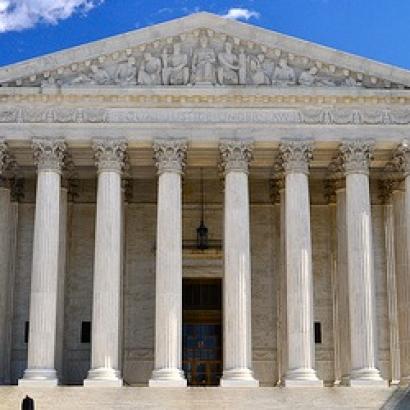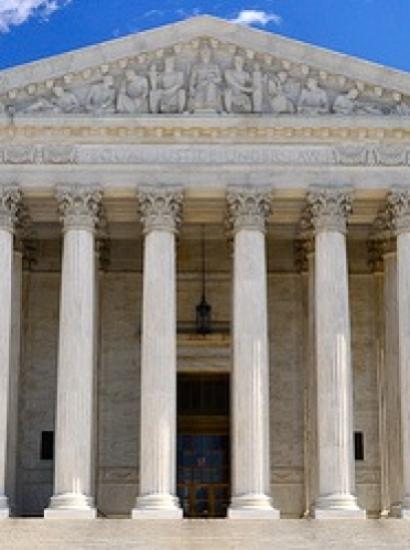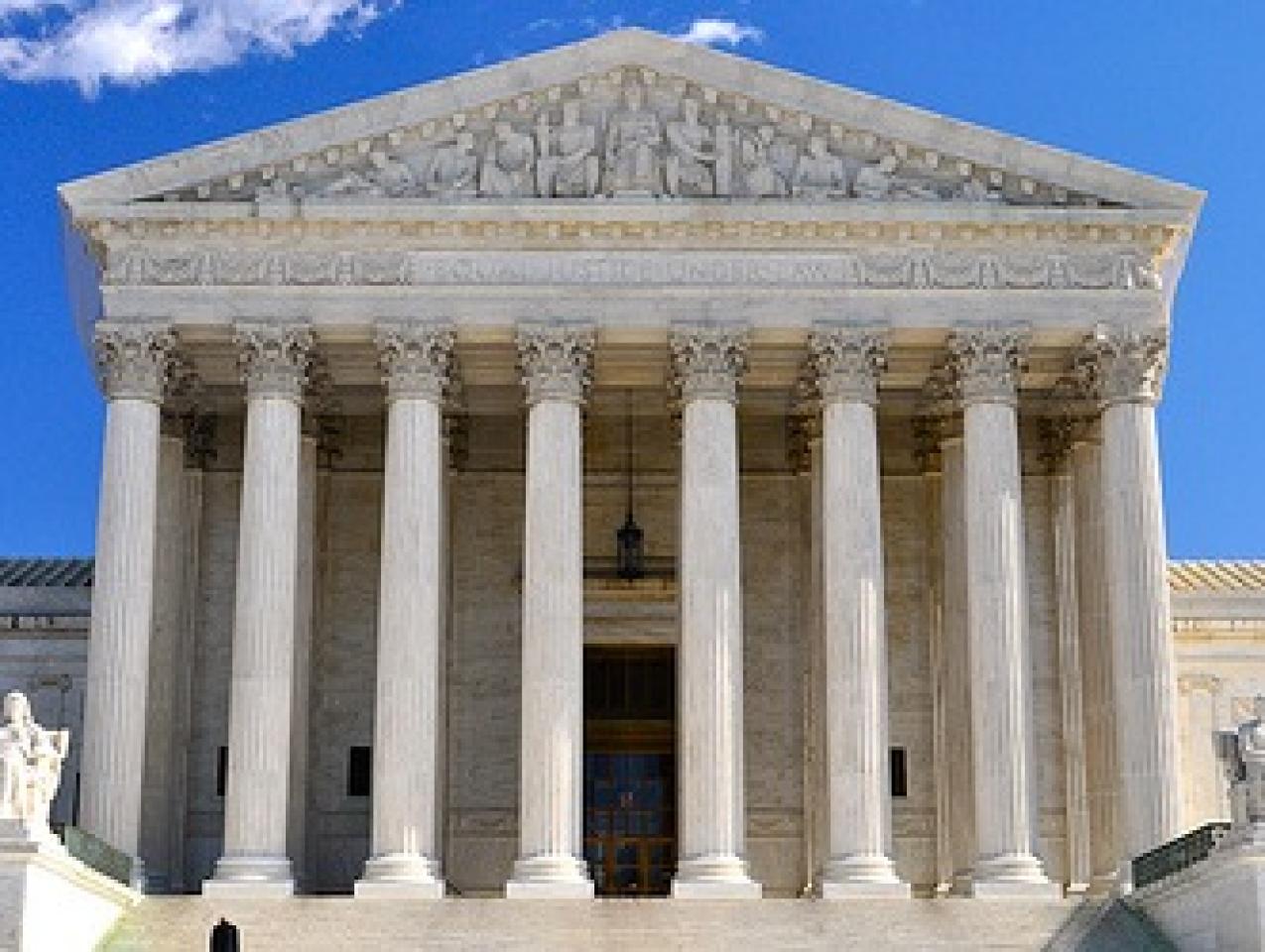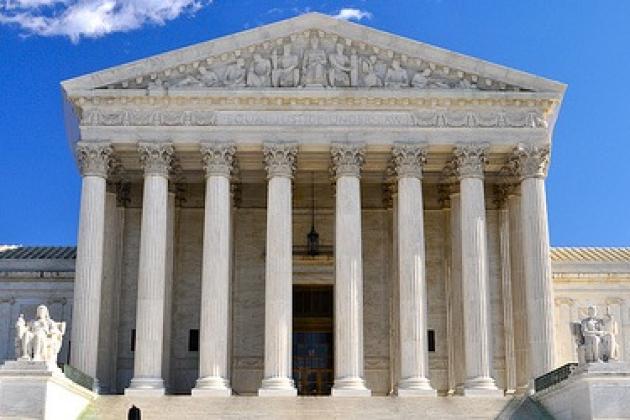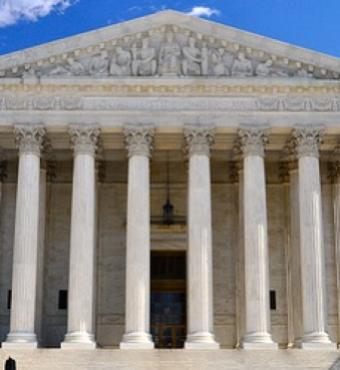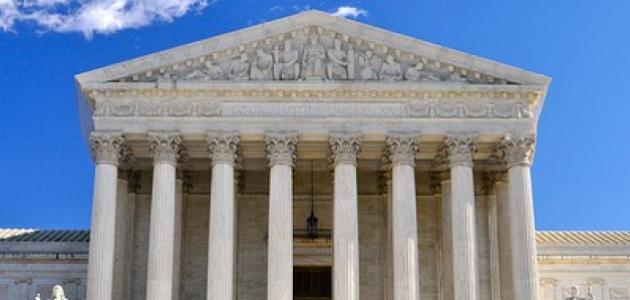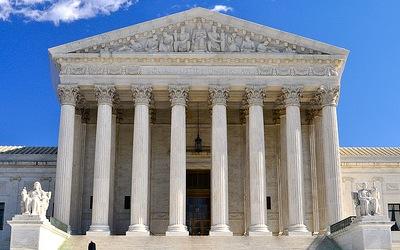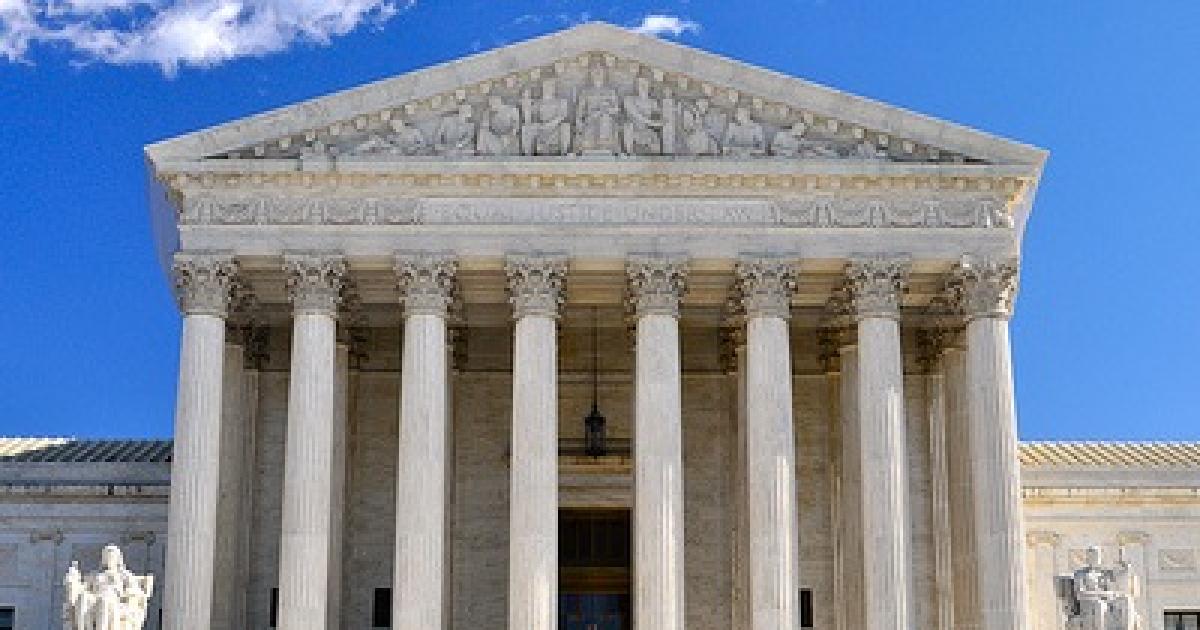- Law & Policy
- Politics, Institutions, and Public Opinion
- Regulation & Property Rights
Fortunately, it is the rare occasion when we have, on the one hand, many good reasons to expect a bad outcome from our taking a particular set of next steps but, on the other, a great demonstrated resolve to take those steps anyway. Unfortunately, today’s patent system represents one of those rare situations.
In September, after several months of thin bipartisan cooperation that was eclipsed from popular attention by the cacophony of discord over larger issues like the budget, Congress and the president managed to pass and sign into law the America Invents Act—the largest overhaul to our patent system since the 1952 Patent Act. Then, in its new term launched at the beginning of October, the Supreme Court will be deciding two big patent cases—Hyatt v. Kappos and Mayo v. Prometheus—that will likely bring some of the new statute’s worse features into action.
While our own recent history gives us great reasons to confidently predict the significant harm that these cases and this statute will bring to our patent system in particular and our broader economy in general, as formal matters, some wrinkles in how the fabric of the Court’s case law has evolved over the past decade or so are likely to make the actual economic impact largely irrelevant to the specific legal arguments placed before the Court.
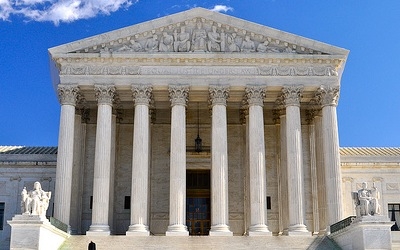
Photo credit: TexasGOPVote.com, via flickr
Hyatt v. Kappos is a case about how much deference the Patent Office should get when its decisions are reviewed in court. Good arguments can be made on both sides of the case about some zany behaviors—one side pointing to examples of the trifling respect reviewing courts have given to some of the Patent Office’s decisions and the other side pointing to the trifling use of the evidence that was in the record during some of the Patent Office’s initial decisions. But the seriously under-appreciated dimension of the case is the connection between it and the newly passed patent statute.
Back in 1999, when the Supreme Court first started to apply the Administrative Procedures Act (APA) to the Patent Office in Dickinson v. Zurko, the high court had a difficult time figuring out what standard of review should apply to Patent Office decisions. At the time, the organic statute—Title 35—did not give the Patent Office the hallmarks needed to earn enhanced deference under administrative law. But the new America Invents Act is incredibly generous in that regard, giving the Patent Office two of those hallmarks: significant substantive adjudicatory powers and significant substantive rule-making authority. That result is contrary to the recommendations given to Congress for several years by the government’s Public Patent Advisory Committee, which was to consistently but gently push back against the Patent Office’s desires for such power and deference.1
It also is contrary to the legal authorities the Supreme Court has previously cited with favor when interpreting the APA, including the official manual on the APA written by then-Attorney General Tom Clark, later Justice Clark, when the Act was being promulgated. The manual explicitly stated that the APA was not designed to apply to the Patent Office.2 But it also is all but pre-ordained by the Supreme Court’s 1999 decision in Dickenson v. Zurko when combined with the broad powers granted by the new patent statute.
The America Invents Act represents the largest overhaul to the patent system since 1952.
Two practical problems are likely to follow when this term’s Hyatt v. Kappos case comes out as expected. The first is that more deference for the Patent Office’s decisions will inject a massive new layer of politics into the patent system. A more politicized patent system will just further entrench those companies with the largest lobbying shops on K Street. The second practical problem is how the Office will manage its new power. The Patent Office already has a team of administrative judges that is about 100-people strong. The many adjudication procedures it now has to carry out under the new patent statute have already led to reports that this team of administrative judges will have to quickly grow by at least another several hundred. Questions about how to manage so many administrative judges have not been well resolved in other areas of the U.S. legal system, like the Social Security Administration; nor have questions about whether they are even legal.3
Fears about pure political influence driving outcomes at the Patent Office are not without foundation in recent history, under both Democratic and Republican administrations. The elimination of effective patent protection for computer software through the Supreme Court’s 1972 decision in Gottschalk v. Benson was the direct result of intensive influence wielded over the U.S. Department of Justice by Nicholas Katzenbach, who became general counsel of IBM in 1969, having formerly run the U.S. Department of Justice as Attorney General during the Kennedy/Johnson Administration.
A similar political influence was applied, albeit ultimately unsuccessfully, during the first Bush administration, in the lead up to the 1994 Federal Circuit decision in In re Alappat. The Patent Office Commissioner had made the striking decision to spontaneously reconstitute the Patent Office’s internal Board of Appeals to hold a rehearing before a specially packed Board so the new Board would have enough votes to overturn the initial Board’s favorable decision on patent on a type of software and instead reject the patent. Today’s Patent Office, under a Democratic administration, already gives special treatment for patents relating to so-called “green” energy technologies, and there is little reason to think it wouldn’t swing to give special treatment to technologies relating to fossil fuel energy sources under a Republican administration.
Those fears also play into the second patent case that is presently before the Supreme Court: Mayo v. Prometheus. That case raises exactly the same questions that arose in Benson and Alappat about what types of technologies are even eligible for patent protection. And because those prior cases were examples of pure political manipulations in the patent system, we should expect this case to re-open the door to similar mischief. While the only main difference is that the Mayo v. Prometheus case relates to biomedicine rather than software, which was at issue in Benson and Alappat, the flexible standard used in both areas of technology has repeatedly demonstrated the same patterns of political influence. Questions about what types of technologies should be covered by patents are best answered by looking to the substantive requirements long contained in our patent system—such as those relating to the prior art and the extent of a patent application’s disclosure. The many silly examples often debated, like patents on methods of teaching antitrust courses in law school, are easily weeded out by these serious requirements that were carefully designed into the patent system.
What types of technologies are eligible for patent protection?
Unfortunately, the Supreme Court keeps opening the door to an additional requirement—called statutory subject matter—by deciding to hear cases like Bilski v. Kappos in 2010 and Mayo v. Prometheus this term. While Section 101 of the Patent Act was written in 1952 to specifically reverse by statute a set of cases that had suggested certain categories of subject matter might be ruled out from patent protection—like business methods or living things—the Court’s repeated decisions to hear cases on this question creates a massive degree of uncertainty. And that uncertainty becomes only more pernicious when the scope of permissible subject matter can become the political play-thing of the Patent Office for reasons explored earlier.
While political influence is bad for patents, the typical political party divides do not map well onto patents. Both sides of today’s debates about patents have some odd bedfellows. Those focusing on the importance of strong patents have included unions, many Republicans, small businesses, and some large pharmaceutical companies. Those focusing on the problems of over-enforcement of patents have been many Democrats joined by a number of big businesses from the high-technology sector including Microsoft, Google, IBM, and Cisco, as well as some other large pharmaceutical companies.
In the recent Supreme Court patent cases, both Justice Scalia and Justice Breyer have been critical of patents. And in the 2006 Supreme Court eBay decision, both Chief Justice Roberts and Justice Ginsburg spoke in favor of strong patents. Similarly, our prior patent law, the 1952 Patent Act, was endorsed by leading jurists of various political stripes including Giles Rich, an Eisenhower appointee, Learned Hand, generally viewed as a centrist, and Jerome Frank, generally viewed as a populist. The 1982 creation of the Federal Circuit to strengthen the patent system by bringing case law more into line with the 1952 Patent Act was a major domestic policy initiative of President Carter that was signed into law with much fanfare by President Reagan.
So today’s problem of politics facing patents is not one that pits one political party against the other. The problem is instead one that pits anyone willing to invest heavily in playing the games of crony capitalism, lobbying, and influence peddling, against those interested in investing in innovation.
The Court's repeated willingness to re-open debates about patentable subject matter, each time almost as if writing on a clean slate unencumbered and uninformed by prior carefully considered and firmly reached statutory decisions, combined with its willingness to give the Patent Office more administrative deference, will set the Patent Office up as a huge focal point for pernicious political influence. Yes, we are all post-modern enough to recognize that politics is everywhere, that law, including property law, is endogenous to politics, and that it’s become fashionable for the left and right to see patents as more like regulatory entitlements than property rights. But none of that is a reason to tack in the direction of making them even less like property than they already are.
Be prepared for political meddling in the Patent Office.
While the sky won’t fall and people will still get patents and enforce them, the fears so often voiced by patent skeptics, that stronger patents would bring the wheels of future commerce to a halt, are also overblown. And more politics for patents will just exacerbate the subtle but important harmful shifts that are already underway in our patent system. Overall, changes in that direction benefit large firms that have the means of exploiting their own inventions and capturing value through product sales while frustrating overall levels of market innovation, including efforts by smaller firms and entrepreneurial startups that rely on patent protections and licensing revenues.
Recent history has given us at least two striking natural experiments about how this dynamic plays out. Before 1980, the United States, Europe, and Japan all had held the view that patents in the area of basic biotechnology could not overcome a range of vaguely defined “public policy” objections. As a result, patents on basic biologicals were not reliably available or enforced. Patents on pharmaceuticals were. Then, thanks to the 1980 Supreme Court case, Diamond v. Chakrabarty, basic biologicals suddenly got to enjoy meaningful patent protection for both products as well as testing methods and devices. That change occurred only in the United States, and only after 1980. The immediate result was remarkable growth, but only in the United States, in the number of small- and medium-sized biotechnology companies and a drastic increase in the number of new drugs and new medical devices brought to market.
The software industry offers a parallel story: the absence of patents was linked with the rise of a monopoly. The U.S. courts had allowed themselves to accept the view that patents on computer software and methods of doing business were, like patents on living organisms, inconsistent with a range of “public policy” notions that stemmed from the 1972 Supreme Court Benson case up through the 1980s and into the 1990s. It was only after the 1994 appellate court Alappat case that the single biggest Microsoft competitor—Google—was able to come to market in the United States, relying on strong patents and trade secrets. To paraphrase Judge Jerome Frank writing in the 1942 case of Picard v. United Aircraft: predictable enforcement of patents helps give the Davids the vital slingshots they need to take on the Goliaths.
We may have missed our chance to stop the next serious moment of decline in our patent system. It may, thus, be better for us all to just collectively grimace as our patent system, as currently implemented, contributes to the further decline of our economy. Then, after a while, we can pick ourselves up, dust ourselves off, and try to form a leaner, firmer, more economically sound patent system—a system that can again meaningfully contribute to job formation, competition, and overall economic growth. We could start by passing a well-conceived statute focused on objective, fact-based standards for granting and enforcing predictable property rights, like we did with the 1952 Patent Act.
1See, e.g., 2010 PPAC Annual Report, at p. 17, www.uspto.gov/about/advisory/ppac/ppac_2010annualrpt.pdf
2For a broader discussion of the history of those authorities, see In re Lueders, 111 F.3d 1569, 1574-79 (Fed. Cir. 1997)
3For a discussion of the practical and constitutional problems with administrative judges in the SSA setting, see Pierce, Richard J., What Should We Do About Administrative Law Judge Disability Decisionmaking?, http://ssrn.com/abstract=1890770








